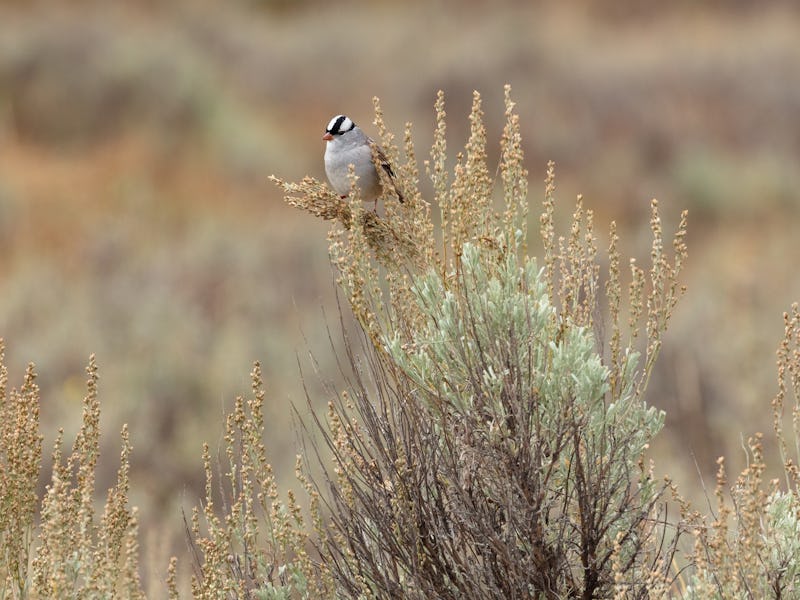How did North America lose almost 3 billion birds in 50 years?
Songbirds like sparrows and warblers saw the largest drop in population.

Whether or not you believe we’re in the middle of a sixth mass extinction, data shows that wildlife is suffering. Worldwide biodiversity loss threatens global ecosystems, and it could eliminate more than a million species, as reported by the United Nations earlier this year. While many reports tend to focus on extinction, its natural precursor, population reduction, is already underway for many bird species, new research in the journal Science shows.
Over the past five decades, one in four birds in the United States and Canada have disappeared, researchers report in a study published Thursday. Birds are an indicator of the overall health of ecosystems, the authors say, and their decline points to the need for humans to take action to curb the loss of biodiversity.
Since birds are well studied compared to other animals, there’s a wealth of data that helps to inform studies like this one, lead author Ken Rosenberg, Ph.D., tells Inverse.
“By studying birds, we can understand how the natural world has changed over time, and is continuing to change,” says Rosenberg, a conservation scientist at the Cornell Lab of Ornithology.
Recent research has shown that white-crowned sparrows may be suffering from exposure to insecticides.
Since 1970, the US and Canada have lost 29 percent of their abundance of breeding adult birds, totaling 2.9 billion, the study shows. While birds in every ecosystem have been affected, songbirds were hit the hardest, accounting for 90 percent of that drop in numbers.
The researchers used data from a long-term study called the North American Breeding Bird Survey, as well as other population estimates and trajectories. They also looked at weather radar, which can detect migrating birds at night.
The findings came as a big surprise to Rosenberg. He thought that perhaps some bird species were losing population, but that the losses would be offset by gains in other species.
“That was not the case at all,” he says.
Researchers saw that warblers were some of the birds whose populations decreased the most in the past five decades.
But the results also confirmed what he’d been hearing from birders: “Although the Cornell Lab of Ornithology gets many comments from people saying they’ve seen fewer birds, nobody had done a continent-wide, scientific study to see if, in fact, bird populations were declining across the board,” Rosenberg says.
As it turns out, they were.
Persisting deforestation and development means less habitat for birds, causing global populations to suffer.
“Habitat loss, climate change, unregulated harvest, and other forms of human-caused mortality have contributed to a thousand-fold increase in global extinctions,” the authors write, “with profound effects on ecosystem functioning and services.” In short, humans have thrown many ecosystems completely out of whack.
For example, a study published in Science just one week before this one showed that imidacloprid, a common insecticide often used to treat seeds and soils, can cause dangerous weight loss in white-crowned sparrows while they migrated.
Birds are important to the food web as both predators and prey, Rosenberg says. They eat insects, feed larger animals, and spread seeds. That means “declines in birds could therefore reverberate throughout ecosystems.”
And while the new study focused on North America, the trend of steep decline parallels global patterns, Rosenberg and his team say. They caution that population loss forebodes more changes, including extinctions.
It’s not all bad news for birds: There are ways to help populations rebound, and policy changes have worked in the past. Banning the chemical insecticide DDT, for example, helped raptor populations bounce back, and waterfowl management “has allowed ducks and geese to thrive,” Rosenberg says.
“These are important examples that show that, when we choose to make changes and actively manage the threats birds face, we can positively impact bird populations.”
The website 3 Billion Birds, launched on Thursday along with the study, suggests some simple actions that individuals can do for the birds:
- Install screens or break up window reflections with film or paint, to mitigate birds flying into windows
- Keep your cats inside
- Plant native species and reduce your grass lawn
- Avoid using pesticides
- Buy bird-friendly coffee
- Curb your plastic use
Abstract: Species extinctions have defined the global biodiversity crisis, but extinction begins with loss in abundance of individuals that can result in compositional and functional changes of ecosystems. Using multiple and independent monitoring networks, we report population losses across much of the North American avifauna over 48 years, including once common species and from most biomes. Integration of range-wide population trajectories and size estimates indicates a net loss approaching 3 billion birds, or 29% of 1970 abundance. A continent-wide weather radar network also reveals a similarly steep decline in biomass passage of migrating birds over a recent 10-year period. This loss of bird abundance signals an urgent need to address threats to avert future avifaunal collapse and associated loss of ecosystem integrity, function and services.